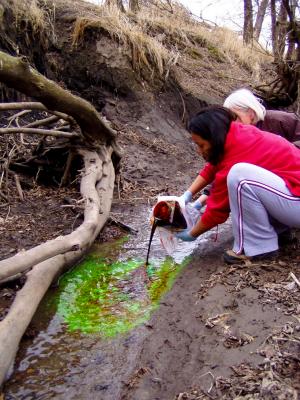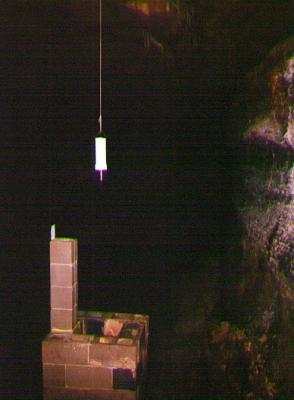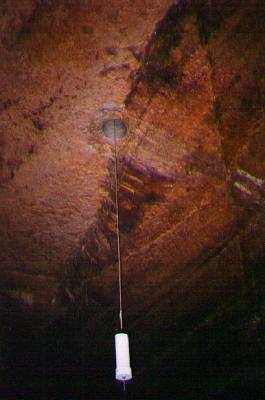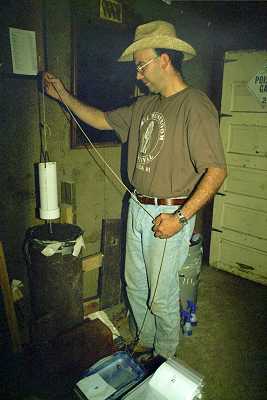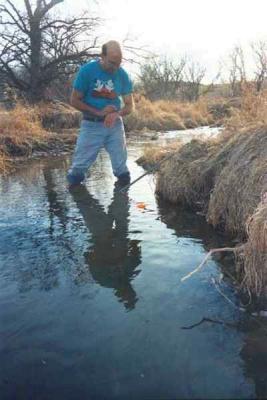History of Research Activities at Coldwater Cave
Research activities at Coldwater Cave began in 1973 when the state of Iowa appropriated funds to the
Iowa Geologic Survey to conduct studies to explore the potential for developing the cave into a state-run
recreational facilitiy. Since the only entrance to the cave was through submerged passages, the state
drilled a 94 foot deep, 30-inch diameter shaft and built a wooden platform in the stream to provide
access for researchers. Hydrologic parameters were monitored to study pollution levels and detailed records were kept on
atmospheric C02 and 02 variations. Because human activity within
the cave was minimal, faunal and floral studies were conducted and aimed at establishing a pre-human
contact ecological baseline. Research on speleothems, isotopic dates, and climatic interpretations was
pursued. A theodolite survey was conducted which documented a little over a mile of cave passage. However, despite the
tremendous interest and enthusiasm that the cave generated, the state of Iowa could not justify a
large expenditure of money for the projected cost of commercial development. The results of these
studies were summarized in a 1974 report from the Iowa Geological Survey entitlted Report on Coldwater
Cave: A Summary of Research Results with Inclusion of Information Related to Potential Development of
a New Recreational Facility by the State of Iowa, D.L. Koch & S. J. Tuthill.
In 1985, Betty Wheeler began groundwater basin studies in the Coldwater Cave area. Her research involved dye tracing to determine the recharge area for the cave,
water quality studies and land use analysis. Her results were summarized in two papers which were entitled
Agricultural Land Use and Groundwater Quality in the Coldwater Cave Groundwater Basin, Upper
Iowa River Karst Region, U.S.A.: Parts I, Huppert, G. N., Wheeler, B. J., Alexander, E. C., Adams,
R. S.; Part II Wheeler, B. J., Alexander, E. C, Adams, R. S., Huppert, G. N., 1988, Resource Management
in Limestone Landscapes
A stream level gauge was installed in a stilling well near the Flatland entrance of the cave in 1980.
Mike Bounk oversaw the stream level monitoring from 1980 through 1989 and detailed records were kept of
stage level of the cave stream. Preliminary results showed that stream levels were seasonal and responded
to precipitation events and snow melts. These results were summarized in an unpublished report
titled Stream Water Record in Coldwater Cave, Northeast Iowa, Bounk, M., The stream level
records are currently being re-analysed in more detail.
In the early nineties, paleoclimate studies using speleothems from mainstream Coldwater Cave were conducted
by Dr. Luis Gonzales and Jeff Dorale of the University of Iowa. Their results are summarized at the
following link High Resolution Paleoclimatic Analysis
Using Cave Stalagmites"







